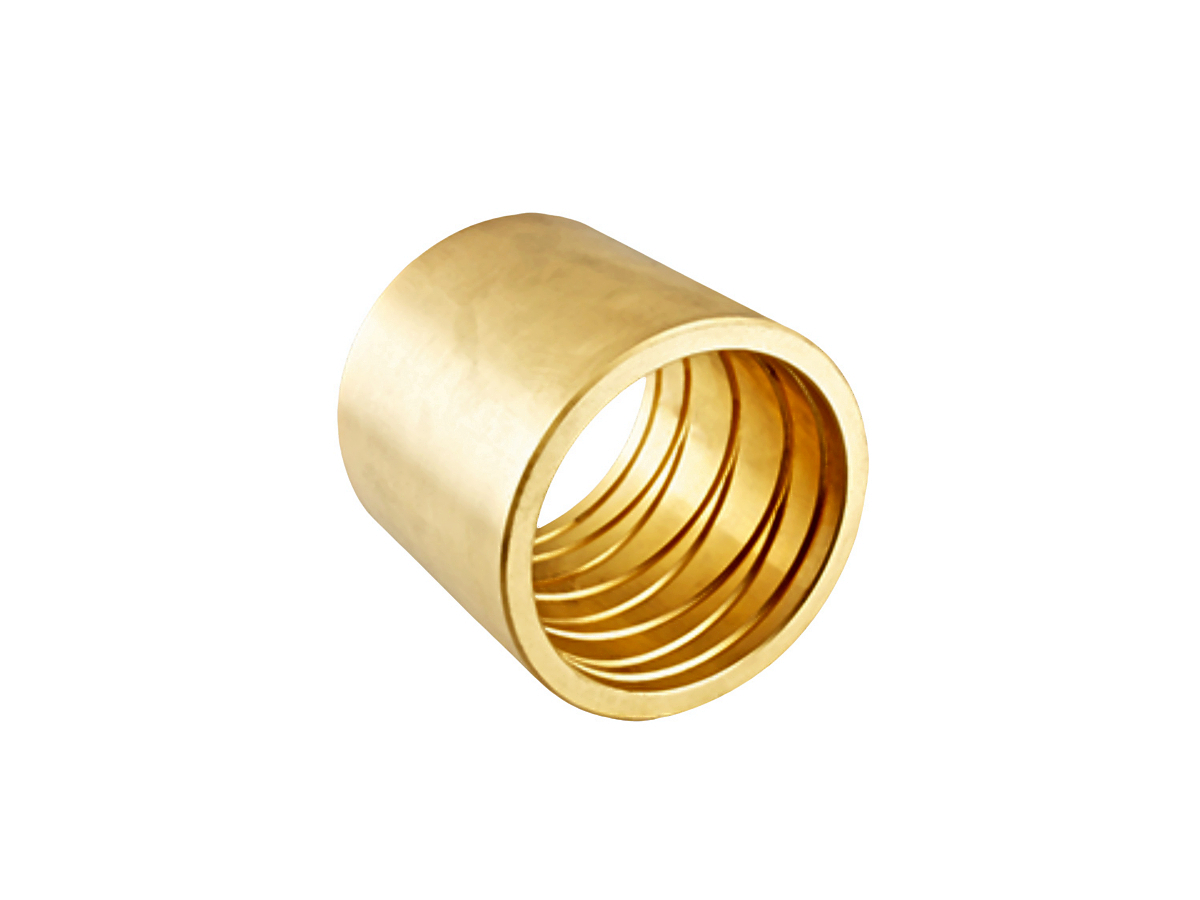Brass C260 Mechanical and Industrial Components CNC Machining Manufacturing
Introduction
The industrial equipment and mechanical engineering industries demand materials with excellent machinability, consistent mechanical properties, and reliable corrosion resistance. Brass C260, also known as Cartridge Brass, is widely recognized as the preferred alloy for manufacturing precision mechanical parts, fittings, fasteners, gears, valves, and various industrial components.
With advanced CNC machining, Brass C260 can be expertly fabricated, delivering parts with superior dimensional accuracy, complex geometries, and exceptional surface finishes. CNC-machined Brass C260 components significantly improve reliability, durability, and functionality in mechanical and industrial applications.
Brass C260 for Mechanical and Industrial Applications
Material Performance Comparison
Material | Tensile Strength (MPa) | Yield Strength (MPa) | Machinability | Typical Applications | Advantage |
|---|---|---|---|---|---|
315-430 | 105-225 | Excellent | Mechanical fittings, industrial valves | Outstanding machinability, good corrosion resistance | |
345-400 | 140-200 | Superior | Precision gears, fittings, fasteners | High machinability, easy fabrication | |
345-415 | 125-150 | Excellent | Industrial fittings, valve bodies, connectors | Good strength, corrosion resistance | |
330-395 | 115-150 | Excellent | Industrial components, valves, fittings | Excellent corrosion resistance, machinability |
Material Selection Strategy
Selecting Brass C260 for mechanical and industrial components involves assessing machinability, mechanical properties, and corrosion resistance requirements:
Mechanical fittings, industrial valves, precision components, and fasteners benefit from Brass C260’s exceptional machinability, consistent mechanical strength, and good corrosion resistance, making it suitable for diverse industrial uses.
Precision gears and fasteners needing superior ease of machining often opt for Brass C360, known for its outstanding machinability and dimensional stability.
Industrial valves, fittings, and components that require good machinability along with increased strength typically use Brass C377, which balances machinability and mechanical performance.
Components demanding excellent corrosion resistance, consistent strength, and good machinability prefer Brass C385, making it suitable for diverse industrial applications.
CNC Machining Processes
Process Performance Comparison
CNC Machining Process | Dimensional Accuracy (mm) | Surface Roughness (Ra μm) | Typical Applications | Key Advantages |
|---|---|---|---|---|
±0.005-0.02 | 0.4-3.2 | Valve bodies, mechanical fittings, complex industrial components | Versatile, precise, and suitable for complex geometries | |
±0.005-0.01 | 0.4-1.6 | Cylindrical fittings, precision shafts, gears | High precision for rotational components, excellent surface finish | |
±0.01-0.02 | 1.6-3.2 | Holes in fittings, brackets, structural components | Efficient hole-making, accurate depth control | |
±0.003-0.01 | 0.2-0.6 | High-precision mechanical sensors, intricate parts | Maximum accuracy, capability to machine complex shapes from multiple angles |
Process Selection Strategy
Choosing the appropriate CNC machining method for Brass C260 mechanical components depends on complexity, precision requirements, and industrial applications:
Complex valve bodies, mechanical fittings, and detailed industrial components benefit from CNC Milling Service, providing versatile capabilities, excellent dimensional accuracy, and superior surface finishes.
Cylindrical components, precision gears, and shafts requiring high rotational accuracy and exceptional surface finishes utilize CNC Turning Service for optimized accuracy and consistent quality.
Components requiring precise holes, brackets, or structural fittings efficiently use CNC Drilling Service, ensuring accurate hole positioning and depth.
Precision mechanical sensors, intricate micro-components, and parts requiring complex geometries demand Multi-Axis CNC Machining Service, providing unmatched accuracy, intricate detailing, and superior surface quality.
Surface Treatment
Surface Treatment Performance
Treatment Method | Corrosion Resistance | Wear Resistance | Industrial Suitability | Typical Applications | Key Features |
|---|---|---|---|---|---|
Outstanding (>1500 hrs ASTM B117) | Very High (HV500-700) | Excellent | Gears, high-wear fittings | Enhanced durability, superior corrosion resistance | |
Excellent (≥1000 hrs ASTM B117) | Moderate | Excellent | Valves, mechanical connectors | Improved corrosion protection, cleanliness | |
Excellent (≥1000 hrs ASTM B117) | High | Excellent | Precision mechanical parts, instrumentation | Ultra-smooth surface, improved sterility | |
Superior (>1000 hrs ASTM B117) | Very High (HV1500-2500) | Excellent | Precision gears, moving components | Exceptional wear resistance, friction reduction |
Surface Treatment Selection
Selecting surface treatments for Brass C260 mechanical and industrial components involves evaluating corrosion resistance, wear resistance, and operational requirements:
Gears, fittings, and high-wear components demanding enhanced durability utilize Electroplating, significantly improving service life and corrosion protection.
Mechanical connectors, valves, and components exposed to harsh conditions benefit from Passivation, ensuring superior corrosion resistance and component integrity.
Precision mechanical parts and instrumentation requiring ultra-smooth finishes choose Electropolishing, which enhances cleanliness and minimizes contamination risks.
Precision gears, moving parts, and critical mechanical components needing maximum wear resistance select PVD Coating, providing superior friction reduction and durability.
Quality Control
Quality Control Procedures
Comprehensive dimensional inspection using Coordinate Measuring Machines (CMM) and optical measurement techniques.
Surface roughness testing was conducted with precision profilometers.
Mechanical property evaluations (tensile, yield, fatigue) according to ASTM standards.
Corrosion resistance verification through ASTM B117 Salt Spray Testing.
Non-destructive testing (NDT), including ultrasonic, radiographic, and magnetic particle inspections.
Detailed documentation is compliant with ISO 9001 and industrial equipment-specific quality requirements.
Industry Applications
Mechanical and Industrial Component Applications
Precision mechanical fittings and connectors.
Industrial valve bodies and fittings.
High-performance gears and fasteners.
Instrumentation components and industrial sensors.
Related FAQs:
Why is Brass C260 preferred for mechanical and industrial components?
How does CNC machining improve the quality of Brass C260 parts?
Which surface treatments optimize Brass C260 industrial components?
What accuracy levels are achievable with CNC machining Brass C260?
What quality standards apply to CNC-machined industrial components?

